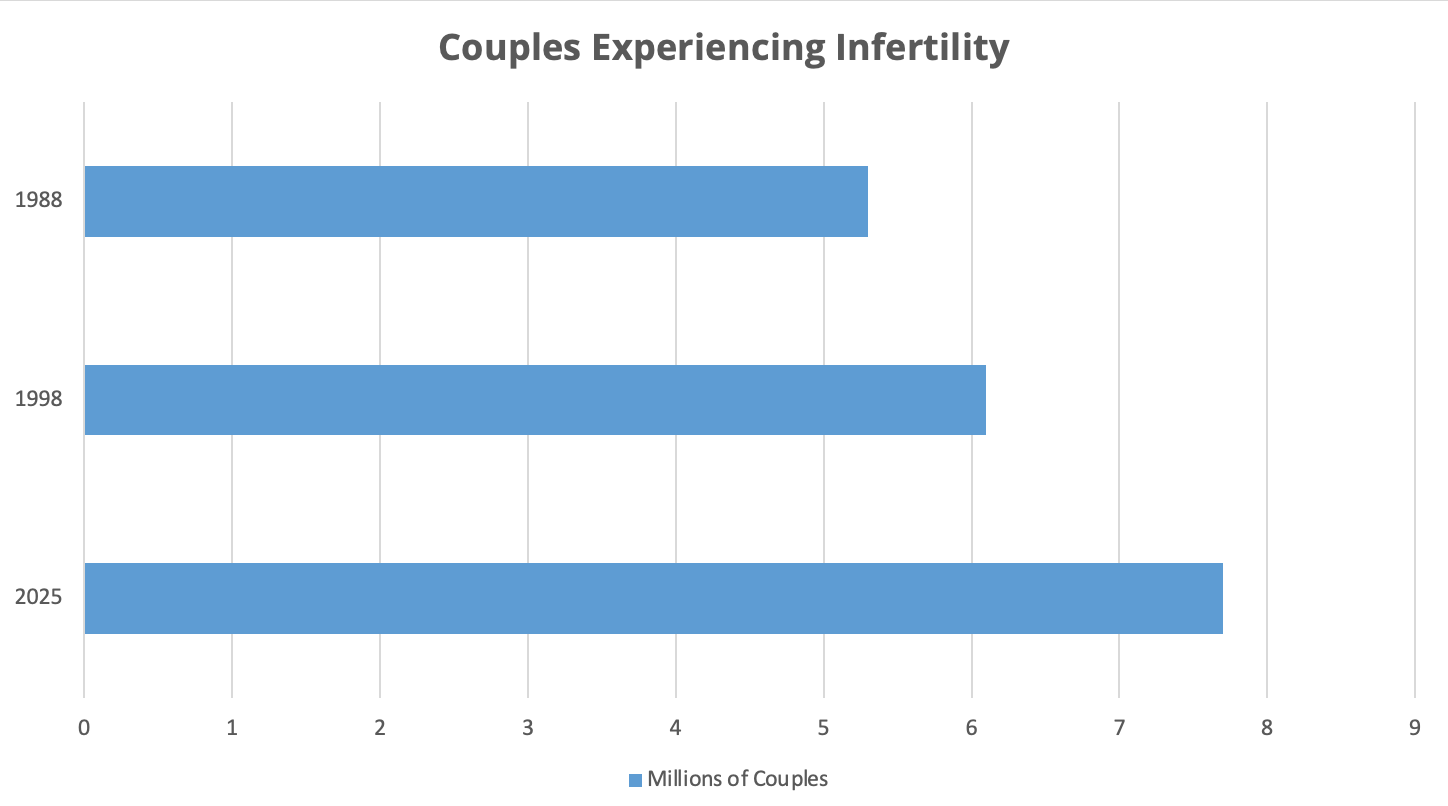What You Should Know About Infertility
Published April 2021
More Common Than You Think
She treats infertility with one goal: To help people who want to be parents become parents. Eve C. Feinberg, MD, is the medical director of the Fertility and Reproductive Medicine Center at Northwestern Memorial Hospital.
“Even if it’s not how they had imagined or planned, the bottom line is that there are options available for people experiencing infertility who want to become parents,” says Dr. Feinberg. “The silver lining of fertility treatment is optimizing patients’ health from preconception to delivery.”
Dr. Feinberg answers frequently asked questions about infertility.
If you’re having trouble conceiving, start with Northwestern Medicine.— Eve C. Feinberg, MD
What Is Infertility?
For people younger than 35, infertility is the inability to get or stay pregnant after at least 12 months of trying.
Fertility declines with age. Often, healthcare providers test and treat women ages 35 and older for infertility if they have not had success after six months of trying.
Who Does Infertility Affect?
One in eight couples struggles with infertility. This number is growing:
- In 1988, 5.3 million couples experienced infertility.
- In 1998, that number grew to 6.1 million couples.
- The number is projected to reach 7.7 million couples by 2025.
Infertility may be on the rise for two reasons:
- People are having children later in life. Women are born with all the eggs they will ever have. Egg count decreases over time, and so does egg quality. With age, women also have a higher risk for problems that affect fertility, such as uterine fibroids.
- Lifestyle factors, such as smoking, poor diet and excessive alcohol use can also harm fertility.

Infertility can occur due to male or female factors, or a combination of both:
What Causes Infertility?
Male infertility is often caused by an issue with sperm:
- Not a high enough concentration of sperm in a man’s semen.
- Sperm has a reduced motility (ability to move).
Female infertility can be caused by many factors. Women need working ovaries, fallopian tubes and a uterus to become pregnant.
- If ovaries are not working properly, women may have too few eggs or poor egg quality. Or, they may have conditions that cause them to ovulate irregularly or not at all, such as polycystic ovarian syndrome.
- Fallopian tubes may be blocked due to anatomy.
- Anatomical issues, like having a misshapen uterus, can impact the ability to get pregnant. Or, some women may have had surgery to remove the uterus (hysterectomy).
Infertility may also be caused by:
- Health conditions, such as endometriosis. This inflammatory disease causes tissue that normally lines the uterus to build up outside of the uterus.
- Absence of gametes (egg and sperm). This is the most common cause of infertility in a single parent, or same-sex and nonbinary couples.
- Cancer treatment in both men and women. This is why oncofertility is important.
What About Age?
Age is the top factor that predicts infertility.
As women age:
- Egg quality and quantity decrease.
- Risk of genetic disorders increases.
- Chance of miscarriage increases.
What Does an Infertility Workup Involve?
An infertility evaluation may involve:
In many cases, there is no way to tell before you try to conceive if you will experience infertility. There are products that test egg supply, but studies show that egg supply alone is not a good predictor of fertility.
How Is Infertility Treated?
In many cases, infertility is treatable. More than 7.3 million people have received fertility services in the U.S. Treatments include surgery, medications or assisted reproductive technology.
Women may need surgery to fix malformations, such as a uterine septum or polyps. Or, they may have surgery to remove tissue caused by endometriosis.
Medications mainly aim to correct hormone issues. Women may receive an oral or injectable medication to cause them to ovulate (release eggs). These medications mimic the natural release of hormones during menstruation.
Assisted reproductive technology includes:
Lifestyle changes, such as weight loss, diet and exercise, may also be part of fertility treatment. For women, the goal is to stay healthy to carry a pregnancy to term.
Are There Other Options?
Third-party reproduction options include:
- Using a donor sperm or egg
- Using a gestational carrier or surrogate
If you are seeking fertility treatment, find a program with a proven track record and a multidisciplinary team of specialists who can address the variety of health conditions that may impact fertility.
“If you’re having trouble conceiving, start with Northwestern Medicine,” says Dr. Feinberg. “We are able to help an overwhelming majority of patients with infertility become parents.”






